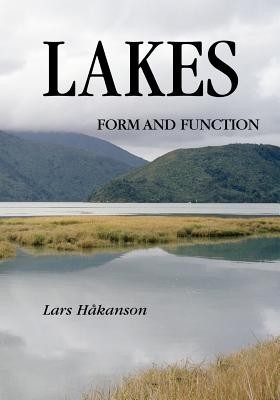
- We will send in 10–14 business days.
- Author: Lars Håkanson
- Publisher: Blackburn Press
- ISBN-10: 1930665245
- ISBN-13: 9781930665248
- Format: 17.8 x 25.4 x 1.1 cm, minkšti viršeliai
- Language: English
- SAVE -10% with code: EXTRA
Reviews
Description
The size and form of lakes regulate many general transport processes, such as sedimentation, resuspension, diffusion, mixing, burial and outflow. Lakes: Form and Function discusses how much of the variations among lakes in fundamental ecosystem characteristics may be related to lake morphometry, catchment area features, climatological factors and measurement uncertainties. The transport processes regulate many important variables, such as concentrations of phosphorus, suspended particulate matter, pH and color. These variables, in turn, affect primary production, which regulates secondary production, for example of zooplankton and fish. This book discusses such relationships using both empirical data and statistical analyses, and mechanistic principles and models. Researchers and students in limnology, as well as consultants and administrators interested in management and studies of lake systems, will enjoy reading this book. Lars HÃ¥kanson received his PhD in Physical Geography from Uppsala University, Sweden. He has written several papers and books related to recent sedimentological processes in lakes, rivers and coastal areas, to mass-balance modelling of radionuclides, nutrients and metals, to aquatic foodweb models and to water pollution.
EXTRA 10 % discount with code: EXTRA
The promotion ends in 23d.17:54:49
The discount code is valid when purchasing from 10 €. Discounts do not stack.
- Author: Lars Håkanson
- Publisher: Blackburn Press
- ISBN-10: 1930665245
- ISBN-13: 9781930665248
- Format: 17.8 x 25.4 x 1.1 cm, minkšti viršeliai
- Language: English English
The size and form of lakes regulate many general transport processes, such as sedimentation, resuspension, diffusion, mixing, burial and outflow. Lakes: Form and Function discusses how much of the variations among lakes in fundamental ecosystem characteristics may be related to lake morphometry, catchment area features, climatological factors and measurement uncertainties. The transport processes regulate many important variables, such as concentrations of phosphorus, suspended particulate matter, pH and color. These variables, in turn, affect primary production, which regulates secondary production, for example of zooplankton and fish. This book discusses such relationships using both empirical data and statistical analyses, and mechanistic principles and models. Researchers and students in limnology, as well as consultants and administrators interested in management and studies of lake systems, will enjoy reading this book. Lars HÃ¥kanson received his PhD in Physical Geography from Uppsala University, Sweden. He has written several papers and books related to recent sedimentological processes in lakes, rivers and coastal areas, to mass-balance modelling of radionuclides, nutrients and metals, to aquatic foodweb models and to water pollution.


Reviews